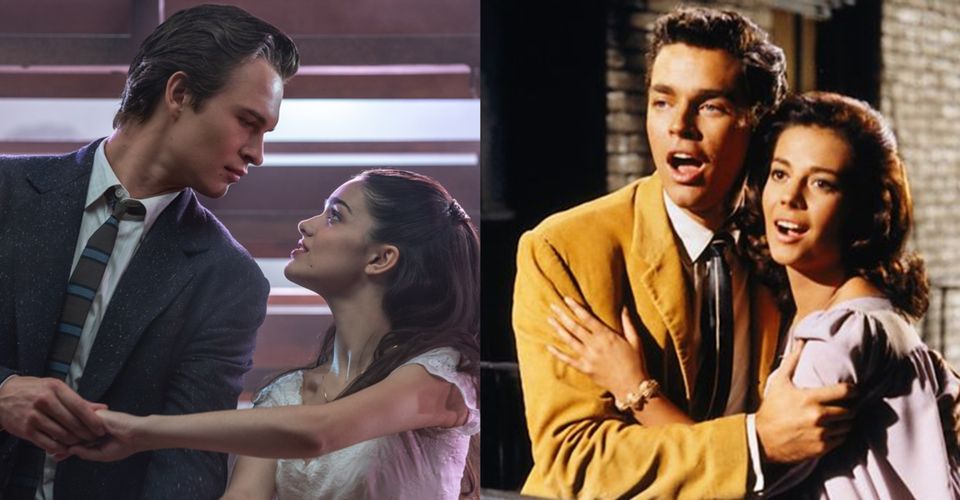West Side Story: 8 Ways The 2021 Remake Improves On The 1961 Original

Remaking a Hollywood classic is always a daring endeavor. If the filmmakers nailed the original, then the remake will likely fall far short of its source material, and even if it doesn’t, the critical response to a remake usually pales in comparison to the acclaim met by its predecessor. 1961’s West Side Story is hailed as one of the greatest movies of all time – certainly in the musical genre – so Steven Spielberg had some huge shoes to fill when he set out to re-adapt the iconic Broadway show.
And yet, against all odds, Spielberg’s West Side Story has been universally praised by critics. Not only did 2021’s West Side Story receive positive reviews; some critics even argued that it surpassed the original.
8 The Camera Is More Active In The Remake

The original movie adaptation of West Side Story is beautifully shot, but its camera is frustratingly static. Directors Robert Wise and Jerome Robbins framed the movie like the Broadway musical, staging each number with a point-and-shoot approach. This works fine, because there’s always something going on with the choreography, but it doesn’t take full advantage of the cinematic form.
Spielberg’s remake, on the other hand, has a delightfully active camera (and, as a result, a more cinematic feel). It’s filled with trademark Spielbergian oners swooping through crowds of dancers.
7 Stronger Performances

The 1961 original is filled with great performances from contemporary stars like Natalie Wood, Richard Beymer, and Russ Tamblyn, but the cast of the remake is even better.
Rachel Zegler made María even more lovable than she was in 1961. Rita Moreno gives a more nuanced turn in the remake than she did in the original. Josh Andrés Rivera nails Chino’s journey from timid dork to vengeful killer. Corey Stoll hams it up as hard-boiled cop Lieutenant Schrank. Mike Faist manages the tricky balance between gangland menace and melodic finger-snapping as Riff.
6 Leonard Bernstein’s Music Has Never Felt More Alive

From the catchy energy of “America” to the heartfelt adulation of “Maria” to the whimsical humor of “Gee, Officer Krupke,” West Side Story has some of the most iconic musical numbers of all time, brought to life by Leonard Bernstein’s sumptuous orchestrations.
Spielberg’s remake breathes more life into Bernstein’s music than ever before. Composer David Newman arranged and updated Bernstein’s original score, then handed it over to conductor Gustavo Dudamel to record it with the philharmonics of both New York and Los Angeles. In the hands of Newman and Dudamel, Bernstein’s well-worn compositions are refreshingly lively.
5 Taking Gang Violence Seriously

The original West Side Story movie didn’t explicitly glamorize gang violence, but it didn’t sell the seriousness of it, either. The remake takes its portrayal of violence much more seriously.
The gangsters still snap their fingers in a catchy rhythm before fighting each other, but once the fight begins, it’s a real fight with real bloodshed.
4 Spielberg Updated The Themes

Sadly, West Side Story’s themes of racial tension and the struggles of immigrants in America are still relevant today, so that thematic substance remained intact in the 2021 re-adaptation of the musical.
But Spielberg updated the themes to include more of today’s social issues. As the city threatens to tear down the neighborhood that the Jets and the Sharks are fighting over, the remake also brings the topic of gentrification into the mix.
3 Expressionistic Visuals

In addition to moving the camera more than Wise and Robbins, Spielberg also applies much more expressionistic visuals in the remake. Viewers remember the dances from the 1961 original, but they remember specific images from the 2021 remake.
A perfect example is the unforgettable overhead wide shot of the Jets and the Sharks confronting each other ahead of the highly anticipated “rumble.” The gangsters’ shadows stretch across the room and overlap with one another.
2 Rachel Zegler And Ansel Elgort Sell The Shakespearean Tragedy

While West Side Story is about gang warfare, it’s framed through a tribute to the William Shakespeare classic Romeo and Juliet. Tony and María are New York-based stand-ins for Romeo and Juliet, respectively, and much like Romeo and Juliet, their love story reaches a heartbreaking conclusion.
In the 2021 remake, Rachel Zegler and Ansel Elgort share a truly tangible romantic connection as they fall madly in love under the bleachers at the gym and care for each other more and more in each subsequent scene. At the end of the movie, Zegler and Elgort really sell the Shakespearean tragedy of Tony’s murder.
1 The Final Scene Hammers The Message Home More Effectively

Ultimately, the message in West Side Story is that “hate begets hate.” Tony accidentally kills Bernardo, so Chino arms himself with the narrow-minded goal of killing Tony. Responding to violence with more violence will only lead to even more violence.
This message is conveyed beautifully in the original movie, but Spielberg hammers it home even more in the remake. In the final scene, before Tony’s body is carried away, María grabs Chino’s gun and gives a powerful monologue that sums up the story’s messaging. Explaining the movie’s message could be a painfully on-the-nose ending, but Zegler’s passion and conviction make it work spectacularly here.
About The Author


















